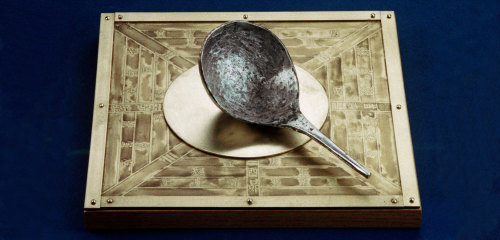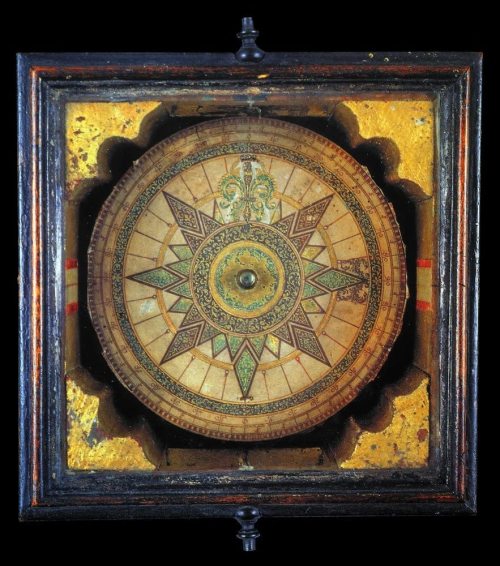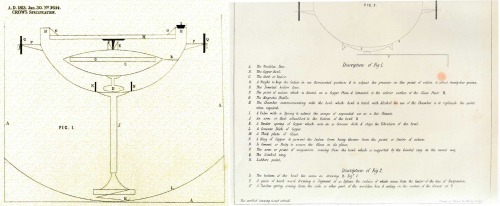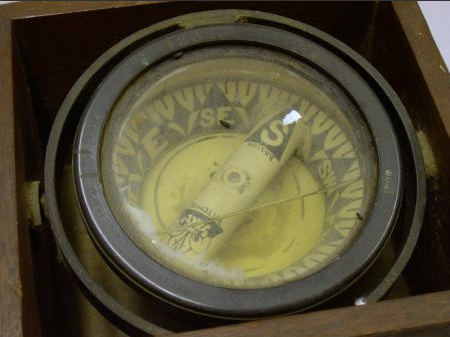The Liquid Compass
The first magnetic compass was invented by the Chinese of the Han Dynasty probably in the 3rd century BC (we don’t know exactly when). However, it did not look like the one we know. It was a spoon shaped lodestone lying on a bronze plate. As soon as the plate moved, the spoon moved in a north-south direction with the handle pointing south. An alternative style involved placing an iron needle that had been rubbed with a lodestone ont a piece of wood onto a piece of wood that was then floated in a bowl of water. The water allowed the wood to spin until the iron oxide needle was pointing south.

Replica of a Han Dynasty
(206 BC–220 AD)
lodestone compass (x)
Around the late 1200s to early 1300s, sailors began to use a dry compass. This new advance used a swivelling needle which was attached to a compass card in a wooden box. The cardinal points of the compass rose looked like a rose. Navigators therefore often refer to this type of compass as a “compass rose”. However, their readings were easily disturbed by shocks and vibrations.

The earliest surviving Portuguese mariner’s compass (dry- card), made in 1711 by Jose de Costa Miranda
© Whipple Museum
Sir Edmund Halley tried to change this in 1690 with his first model of a liquid compass. However, his model was very heavy and difficult to adapt if it was ever damaged. In addition, the liquid was not yet stable enough which made the compass even more unbalanced than a dry compass.It was 1813 that Englishman Francis Crow silversmith and watchmaker patented a pratical version. His design utilised a copper bowl filled with alcohol, with a float made from copper which hat the points of the compass painted on top. A weight was used to keep the float in a horizontal position, while the float bore a magnetic neddle. The bowl of liquid was covered with a sheet of thick glass and the compass was supported in two arms on a gimbal.

Crow’s patent for a liquid compass 1813 (x)

Crow’s liquid compass, 1813 (x)
In 1860, US physicist and inventor Edward Samuel Ritchie patented a liquid compass that was superior in operation to Crow’s although the patent was almost identical. The US Navy adopted the design shortly afterwards.

Ship’s Liquid Compass by Ritchie,with patent dates to July 1870 © Skinners
Although there was limited use of liquid damped compasses on some Royal Navy ships and smaller boats from arround 1830, the service continued to use the dry mounted compass until 1908. It was at this point that the operational advantages of using the liquid compass in heavy seas and under heavy gunfire instead of the dry mounted design. And they were used instead the dry ones.
